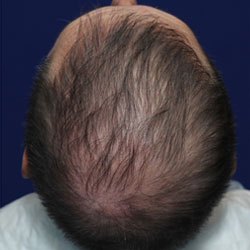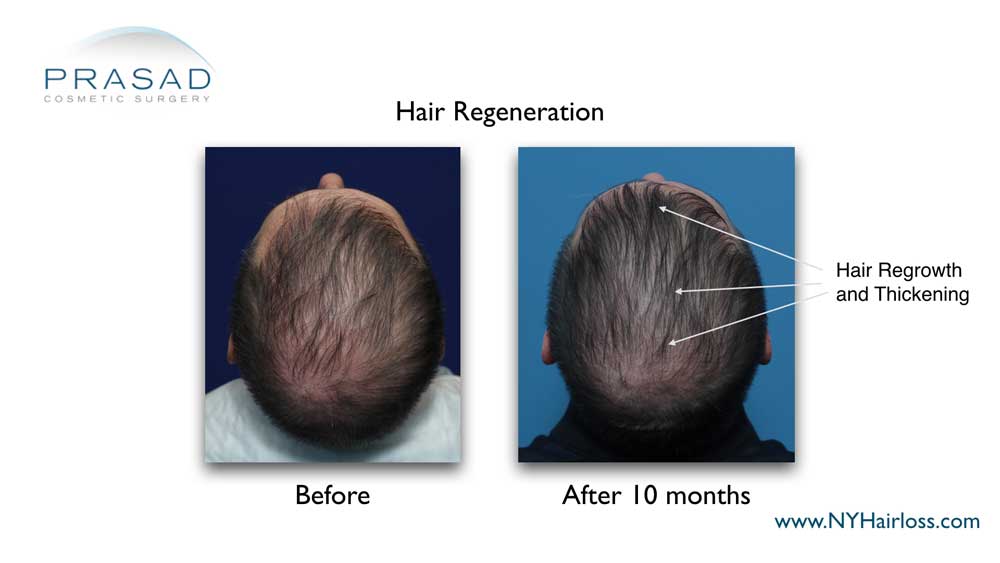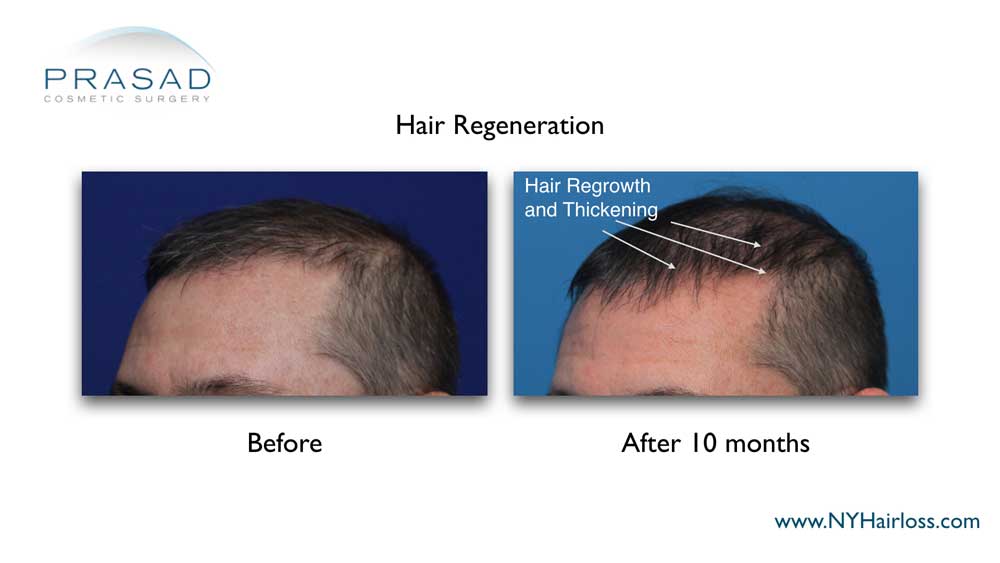
Late onset male pattern hair loss without finasteride
Age 49 at initial consultation
Onset of hair loss about 10 years prior
A 49-year-old man started losing hair about 10 years prior, which is classified as relatively late onset, so his scalp sensitivity to dihyrotestosterone (DHT) was moderate. His hair thinning was diffuse, or followed a pattern that covered the whole scalp. He wasn’t taking a DHT-blocker like finasteride prior to treatment.

Thinning hair at the mid scalp and crown grew back thicker 10 months after a single TrichoStem™ Hair Regeneration PRP+ACell injection treatment. As DHT-sensitivity is lower for cases of later onset of pattern hair loss, a DHT-blocker like finasteride was not prescribed.
His results are from a single Hair Regeneration injection treatment session. Since had an older age of onset, DHT-sensitivity was lower, so taking finasteride after treatment was not as important as a younger patient with high DHT-sensitivity. Thicker hair growth from thinning hair, and new hair growth from dormant hair follicles were achieved progressively, with pictures taken 10 months after treatment.

Thickening miniaturized hair, as well as stimulating hair growth from dormant hair follicles were seen at the frontal hairline and mid scalp. Darker hair is often a side effect of the Hair Regeneration treatment.
For men with high DHT-sensitivity, evident in early onset of pattern hair in the late teens, 20s, and early 30s, a DHT-blocker is often needed to sustain results of the treatment longer. For men with an age of onset in their late 30s and older, DHT-sensitivity is not as acute, so the need for a DHT-blocker like finasteride is decided on a case-to-case basis.
